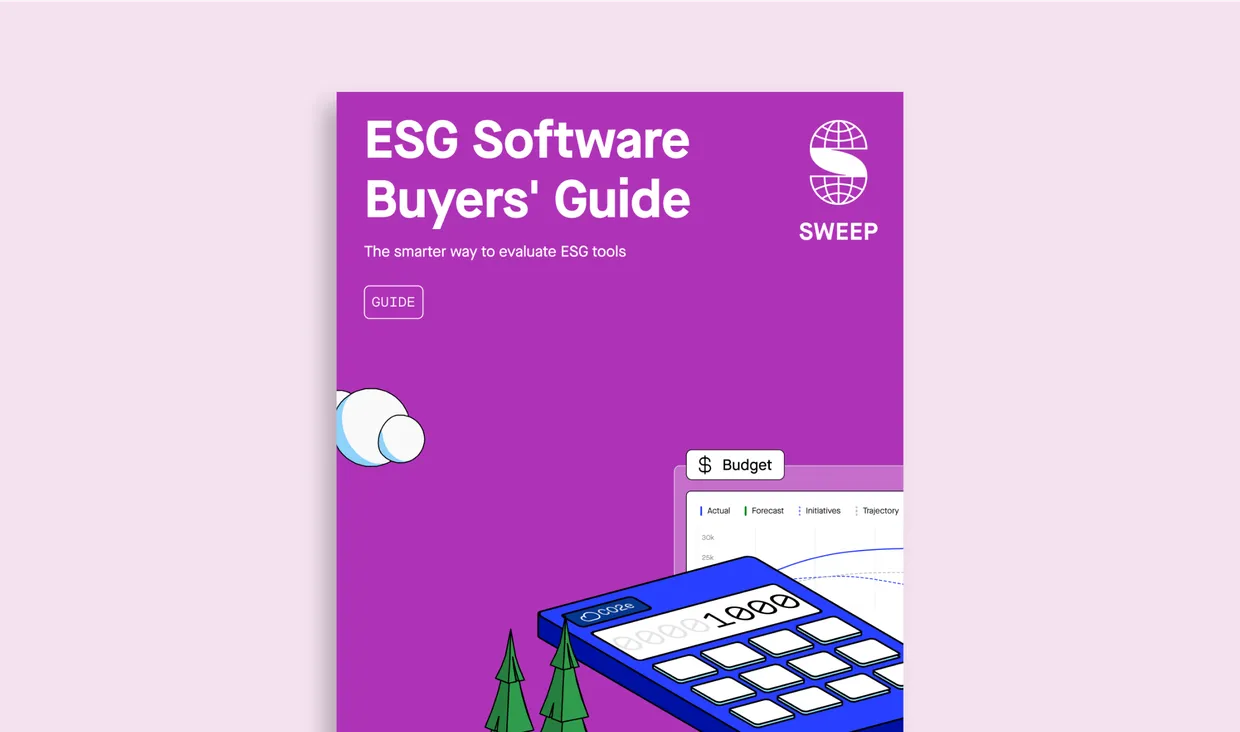SB 261 applies to companies with annual revenues exceeding $500 million and requires them to publicly disclose, every two years, how climate change presents financial risks to their business—and the strategies they are adopting to mitigate and adapt to those risks.
The law emphasizes forward-looking scenario analysis and robust climate risk management. To support compliance, companies are expected to use advanced software platforms that enable timely reporting implementation, improve data accuracy, and ensure consistency with regulatory requirements. Disclosures must be credible, and as such, SB 261 encourages the use of third-party assurance to validate greenhouse gas emissions data and strengthen investor and stakeholder confidence.
The law is enforced under the California Health and Safety Code, with penalties of up to $500,000 annually for non-compliance. Reporting entities must also provide the designated emissions reporting organization with a copy of the complete assurance provider’s report on their greenhouse gas emissions inventory—including the name of the third-party assurance provider.
Who do the laws apply to?
The laws apply to both public and private companies that conduct business in California. “Doing business in California” is broadly defined and includes companies engaged in financial transactions, headquartered in the state, or holding significant sales, property, or payroll there. This means even companies with limited California activity could be subject to compliance. Applicability is determined based on the company’s revenue from the prior fiscal year.
These laws reflect a global push toward increased corporate transparency in emissions reporting, affecting a wide range of reporting entities. Similar initiatives, such as the European Union’s Corporate Sustainability Reporting Directive (CSRD) and upcoming U.S. Securities and Exchange Commission (SEC) climate disclosure rules, indicate that businesses worldwide will face greater scrutiny regarding their environmental impact.
Companies complying with California’s regulations may find themselves better prepared for international reporting obligations as well.
What is the California Air Resources Board?
The California Air Resources Board (CARB) is the state agency responsible for protecting public health, welfare, and the environment by regulating air pollution and ensuring that administrative penalties imposed for violations are enforced . Established in 1967, CARB oversees air quality standards, implements climate policies, and enforces emissions regulations for vehicles, industries, and businesses. It plays a key role in advancing California’s climate goals, including reducing carbon emissions, promoting sustainability practices, and ensuring compliance with laws like the California Climate Corporate Data Accountability Act (CCDAA). CARB’s initiatives help drive emissions reduction, improve economic health, and support a cleaner, more sustainable future.
What is the timeline for compliance?
California’s SB 253 (Climate Corporate Data Accountability Act) introduces a phased timeline for mandatory emissions reporting. The law requires large companies to disclose their greenhouse gas emissions starting in 2026, with escalating assurance standards over time.
Key milestones:
- July 1, 2025:
The California Air Resources Board (CARB) must finalize the implementing regulations and establish the state’s reporting program and platform guidelines.
- 2026:
Companies must publicly disclose their Scope 1 and Scope 2 emissions using data from fiscal year 2025. These disclosures must undergo limited third-party assurance.
- 2027:
Companies must begin reporting Scope 3 emissions, which account for indirect greenhouse gas emissions across the value chain (such as those from suppliers, transportation, and customer use). These disclosures will also be based on prior-year data.
- 2030:
Assurance standards increase:
- Scope 1 and 2 emissions must be verified through reasonable assurance.
- Scope 3 emissions must receive limited assurance.
CARB will oversee implementation and enforcement, including setting detailed deadlines for Scope 3 reporting. While legal challenges to SB 253 remain in progress, the state continues to move forward with regulation design and infrastructure.
What are the consequences of non-compliance?
The laws differ in enforcement levels, but both allow for administrative penalties:
SB 253
Reports will be evaluated by institutions such as the University of California or national libraries. Failure to comply may result in fines of up to $500,000, with penalties adjusted based on a company’s prior experience with emissions reporting.
SB 261
Non-compliance could result in fines of up to $50,000, with third-party entities monitoring adherence under California’s climate investment framework and TCFD guidelines.
Why is technology the linchpin of compliance?
The complexity and scale of these laws mean that companies can no longer rely on spreadsheets or siloed processes. Software solutions are critical to enable:
- Real-time emissions data collection from across the organization
- Granular emissions calculations across all scopes (especially Scope 3)
- Alignment with global frameworks like TCFD, ISSB, and the GHG Protocol
- Transparent greenhouse gas emissions reporting to regulators and stakeholders
- Readiness for audits and integration into a long-term reporting program
What should you look out for when selecting California-ready ESG software?
When selecting ESG software, here’s what to prioritize:
1. Full greenhouse gas emissions inventory
Your platform must support comprehensive emissions tracking, especially Scope 3, which is central to SB 253. Look for systems that integrate real-time emissions data from your entire value chain and support industry average data where direct data isn’t available.
2. Climate risk modeling
SB 261 demands forward-looking analysis. Choose software with scenario planning and alignment to the TCFD framework to quantify risks tied to temperature rise, regulation, and market shifts.
3. Regulatory intelligence
California’s laws will evolve—and global disclosure mandates are catching up fast. Your software must monitor changes in the Health and Safety Code, reporting program criteria, and global frameworks to maintain compliance without duplication of effort.
4. Audit-ready infrastructure
Transparency requires proof. Opt for systems with strong documentation trails, traceability, and version control, enabling third-party verification and public disclosure with confidence.
5. Collaborative workflows
Ensure consistent data input across finance, procurement, legal, and sustainability teams. Permissions-based access, workflow automation, and centralized systems are essential to managing complex emissions reporting efficiently.





